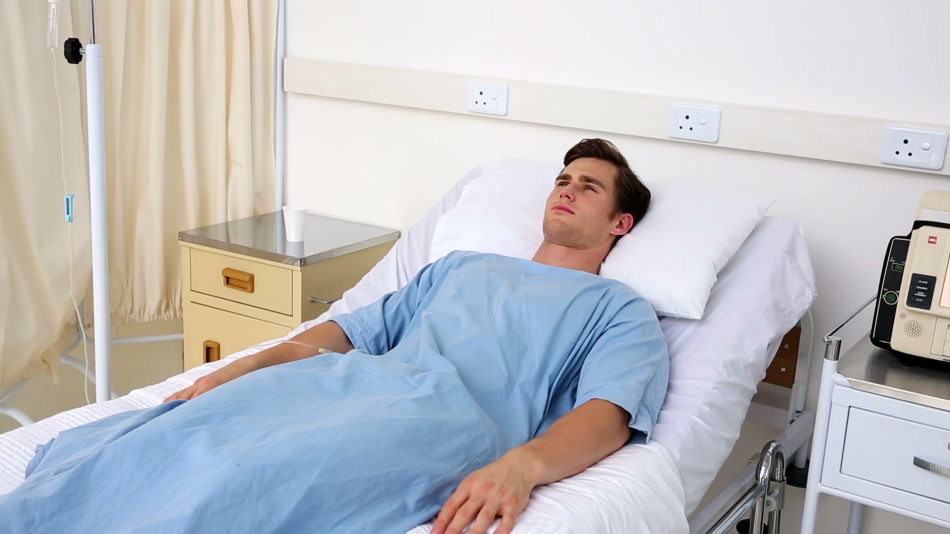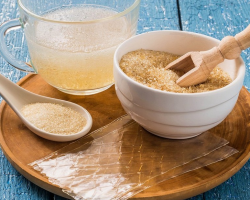What is appendicitis? What are the types of appendicitis? Symptoms of appendicitis in children, adults and pregnant women. Operation to remove appendicitis.
Content
- The reasons for the development of appendicitis in adults and children
- Where is the appendicitis, what does it look like, which side does it hurt?
- Signs and symptoms of appendicitis in adult men and women
- Signs and symptoms of appendicitis in children and adolescents
- Signs and symptoms of appendicitis in pregnant women
- Appendicitis Chronic
- Purulent appendicitis
- Acute phlegmonous appendicitis
- Gangrenous appendicitis
- APDENDICITE Removal Operation: Laparoscopy
- How long does an operation to remove appendicitis last?
- What can be eaten after surgery for appendicitis?
- How much do they lie in a hospital with appendicitis?
- All about appendicitis: video
Appendix is \u200b\u200ba process of the cecum. It is not known for which this strange education exists in general. Scientists suggest that the main function of the appendix is \u200b\u200bto protect the small intestine from harmful organisms abound in the cecum.
Appendicitis, in turn, is called the process of inflammation of this process of the cecum. Such inflammation is quite common. The operation to remove the inflamed appendix is \u200b\u200bconsidered ordinary and quite simple.
This article will be devoted entirely to the appendix, the reasons for its inflammation, signs and symptoms, varieties, as well as the procedure for its removal and the recovery period.
The reasons for the development of appendicitis in adults and children

It is difficult to name the true causes of the development of appendicitis in adults and children. There are several theories that are trying to explain the nature of inflammation of the appendix:
Mechanical theory The development of appendicitis is based on the blockage of the appendix. As a result of obstruction of the process of the cecum, irreversible processes begin to occur inside it - increased pressure, stagnation of capillary and venous blood, ischemia and activation of conditionally pathogenic flora. The following factors can provoke this situation:
- parasites - accumulation of helminths (for example, ascaride) can clog the passage into the process
- feces - characteristic people aged
- an increase in lymphoid follicles
- spikes
- foreign body (bones, seeds)
- scarring
- tumors
Infectious theory Explains the appearance of appendicitis with the penetration of infection into the intestines. Diseases that can provoke inflammation of the appendix include tuberculosis, amoebiosis, typhoid fever, etc.
Vascular theoryi am based on the fact that frequent vascular diseases (systematic vasculitis) provoked by spasm of blood vessels of the appendix can become the cause of appendicitis.
In addition to the above theories, the causes of appendicitis are also considered:
- Hereditary predisposition
- Incorrect nutrition - eating a large amount of meat can provoke inflammation of the appendix; In people who use starvation, appendicitis is found at times less
- Anatomical features of the appendix
- Clogging of arteries providing appendix nutrition
- Immunodeficiency conditions provoked by the way of life (stress, smoking, alcohol use, ecology)
- Infection with infection from nearby genital organs in women
Where is the appendicitis, what does it look like, which side does it hurt?

- As written above, appendix is \u200b\u200bthe process of the cecum. It is located on her dome. The appendix form has worm -shaped. The length of the process is 3-5 cm at the birth of a person, and by the age of 10 it reaches 10cm. The diameter of the appendix is \u200b\u200b4-5mm
- The appendix consists of several balls of fabric - serous, muscle, submucosal and mucous membrane
- The appendicular artery provides the power and outflow of venous blood required for the process
- Appendix boasts the presence of two nerve plexuses - submucosal and muscle
- The appendix contains a large number of lymph nodes. This fact at least a little explains the essence and purpose of this process
- Normally, the cecum with an appendix should be located in the right iliac region. However, there are cases when their location does not meet the norms at all - the mirror arrangement of organs. In addition, the appendix itself can be placed in any part of the intestine
- The pain in appendicitis is most often localized in the right side of the abdomen
Signs and symptoms of appendicitis in adult men and women

The main signs of appendicitis in adults are:
- Pain: at first, the pain is stupid and spreads to the entire upper abdomen - you can confuse with pain in gastritis; Over time, pain begins to be localized clearly in the right iliac region; The pain gradually begins to intensify; When moving, coughing, effort, pain can be felt sharper; At a certain stage of inflammation of the appendix, the pain can completely subside, which often leads to late seeing the doctor
- Nausea and vomiting. These two symptoms are reflex in nature and can only manifest itself with appendicitis. Moreover, emptying the stomach through vomiting will not bring the desired relief
- Lack of appetite
- Fever to 38 degrees
- Dry mouth
- Cardiopalmus
- Weakness and malaise
- Liquid chair
- Frequent urination
All of the listed symptoms are characteristic of the catarrhal stage of appendicitis, which lasts the first twelve hours after the start of inflammation.
Signs and symptoms of appendicitis in children and adolescents

Signs of appendix inflammation in children can be called the following symptoms:
- Pain: pain is localized in the navel and is spasmodic, sharp; After sharp shocks, relief occurs in the abdomen, but after time everything is repeated again; The pain can provoke a change in body position, walking, lying on the left side; Over time, pain moves into the area below the navel, closer to the right side
- Weakness
- An increase in body temperature to 37-38 degrees, less often up to 39 degrees (in some cases, an increase in temperature as a symptom, in children is completely absent)
- Nausea and vomiting
- Very rarely problems with stools (diarrhea or constipation)
Signs and symptoms of appendicitis in pregnant women

It is extremely difficult to diagnose appendicitis in a pregnant woman, since in its body there are a lot of various processes that have symptoms similar to appendicitis. In addition, in the abdomen of a woman on demolitions, less intense pain can experience due to the stretch of all its muscles.
Nevertheless, one can distinguish several basic signs of appendicitis in pregnant women:
- Pain: pain can spread throughout the abdomen, and can be localized in the upper, lower right or left side of the abdomen; When accepting the position of lying on the right side, the pain may be intensified; Over time, pain can completely move to the right iliac region
- Nausea and vomiting
- Frequent urination
- Improving body temperature
Appendicitis Chronic

Chronic appendicitis has recently been released in a separate form of appendicitis. This disease has a number of differences from acute or purulent appendicitis:
- Chronic appendicitis has weakly expressed symptoms
- Appendix inflammation can occur for years
- Remove chronic appendicitis - not necessarily
- To cause an exacerbation of chronic appendicitis may non -compliance with the diet
- Pain can occur only while probing the abdomen and pressing on the abdominal cavity
- In patients with chronic appendicitis, constipation or diarrhea is often observed
Often, doctors, so as not to wait for the sudden rupture of appendicitis and long torment of the patient, are proposed to remove the inflamed process surgically. Such an operation is considered planned and the patient, like the surgeon, has the opportunity to prepare for it.
In some cases, a decision may be made to fight chronic appendicitis in a conservative way - taking antispasmodic drugs, compliance with diet, special physiotherapeutic manipulations, and the fight against gastrointestinal disorders.
Purulent appendicitis

Acute appendicitis, that is, acute inflammation of the appendix has several stages:
- The catarrhal stage of appendicitis is the initial stage of appendicitis, which has a duration of up to six hours, and capable of as suddenly damped as it appears
- The purulent stage of appendicitis
- Gangrenous stage appendicitis
- The stage of the rupture of the appendix
Purulent appendicitis occurs six hours after the start of inflammation and lasts up to 24 hours.
Purulent appendicitis is characterized by inflammation of the walls of the appendix and the accumulation of pus inside it.
Due to the large concentration of pus and its spread throughout the process, the appendix begins to increase in size. This leads to increased pain in the second stage of appendicitis. In addition, inflammation is also transferred to the peritoneum, because pain begins to be localized clearly in the right iliac region.
Inflammation and the appearance of pus are also capable of provoking the occurrence of additional symptoms of appendicitis - fever, fever, weakness and nausea.
Acute phlegmonous appendicitis

Acute phlegmonous appendicitis is the third stage of appendicitis. This stage occurs a day after the start of inflammation. She can last only a few hours. During this time, it is simply necessary to remove the filed process from the abdominal cavity.
The main signs of phlegmonous appendicitis:
- Strong nausea
- Increasing body temperature to indicators above 38 degrees
- Severe pain in the right side
- Far breathing
- Weakness
- Abundant sweating
- The front wall of the peritoneum
- The right iliac region is somewhat behind when breathing
- On palpation of the right side of the abdomen, the pain intensifies
The phlegmonous stage of appendicitis is extremely dangerous. Its consequences may become:
- The transition of appendicitis to the gangrenous stage
- Rupture of the appendix
- Peritonitis
- Peliflebit veins of the liver
- Intestinal obstruction
- Appendicular infiltrate
- Blood poisoning
Sometimes with phlegmonous appendicitis the pain subsides - this is the most dangerous condition, since it is deceptive. This phenomenon can delay the patient's appeal to the doctor and lead to the most deplorable consequences.
Gangrenous appendicitis

Gangrenous appendicitis is perhaps the most dangerous stage of appendicitis in front of the process of rupture of the process. It occurs on the second day after the start of inflammation.
Gangrenous appendicitis is characterized by death of tissues, blood vessels and nerve endings of the appendix. The dead process cells, along with a stream of blood, begin to spread throughout the patient’s body, thereby provoking the most severe intoxication.
It is gangrenous appendicitis that often becomes the cause of sepsis and septic thrombophlebitis. Tighten with the removal of a necrosis appendix can lead to its perforation and hit
pus in the peritoneum.
The main signs of gangrenous appendicitis are:
- Increasing body temperature to maximum indicators is 39-40 degrees (in some cases the temperature remains normal)
- A significant decrease in pressure
- Ocute pulse
- Weakness
- Frequent vomiting that does not bring relief
- Dehydration of the body
- The pallor of the skin
- Dry gray
- Bloating and hardening of the abdomen
Sometimes pain, nausea and vomiting can disappear and a person feels imaginary relief.
APDENDICITE Removal Operation: Laparoscopy

Until recently, appendicitis was removed by the usual surgically using a cut in the front of the peritoneum. Such surgery is called appendectomy. Apply it to this day.
However, in some cases, in order to avoid the formation of a rather noticeable scars on the stomach and a faster recovery, today a new procedure for removing appendix - laparoscopy is used.
The essence of laparoscopy is to remove the appendix by making only two microscopic holes in the front of the abdomen. Through these holes, a camera and a surgical tool are introduced into the abdominal cavity.
Laparoscopy has several advantages over appendectomy:
- Short rehabilitation after surgery
- More accelerated recovery of intestinal function
- Lack of strong pain after the procedure
- Short stay in the hospital
- Aesthetic appearance
- Reducing the number of complications after surgery
- The period of incapacity for work is significantly reduced
The removal of the appendix using laparoscopy is carried out under general anesthesia. Preparation for the operation takes no more than two hours. At this time, the patient is provided with antibacterial and painkiller therapy.
In cases with acute appendicitis, the preparation is much faster.
As a rule, laparoscopy is indicated in the catarrhal, phlegmonous and purulent stage of appendicitis. In rare cases, gangrenous appendicitis is removed using laparoscopy. With a rupture of appendicitis, peritonitis or appendicular abscess, only an open operation is indicated.
How long does an operation to remove appendicitis last?

- Normally, the operation to remove appendicitis lasts up to 40 minutes - one hour. However, the surgeon will need so much time only if there were no consequences of appendicitis
- With peritonitis or other complications, the operation to remove appendicitis can last more than two hours
What can be eaten after surgery for appendicitis?

- The recovery period after the operation to remove appendicitis can last from a week to three
- In the first 8-12 hours after surgery, the patient should not eat and drink-you can only wet the lips
- After this time, only light liquid food is allowed - chicken broth, jelly, rice decoction, tea with sugar
- On the second or third day, the patient is allowed to switch to mashed potatoes and cereals-potatoes, pumpkin, zucchini, rice
- The first week after the operation is the most ascetic. From the permissible products-porridge on water, dried fruits, soup puree, vegetable puree, low-fat fish, meat, dairy products. Forbidden products - fatty, fried and acidic food; milk products; foods saturated with fiber; pickles, spices, spices; alcohol
- In the second week of rehabilitation, you can enrich your diet with the following products-mushrooms, casseroles, omelettes, beets, soups-puree without roasting. Products prohibited at this stage - mayonnaise, ketchup, sauce, bakery products, legumes
- Baking and legumes can only be eaten only a month after surgery
- Ideally, follow the indicated diet up to three months
How much do they lie in a hospital with appendicitis?

- After removing appendicitis by laparoscopy, the patient may be in the hospital for about 3-5 days. Children are recommended to be in a hospital from two to three weeks
- With appendectomy, postoperative seams are removed on the tenth day, the subsequent finding of the patient in a hospital is regulated exclusively by the decision of the doctor







